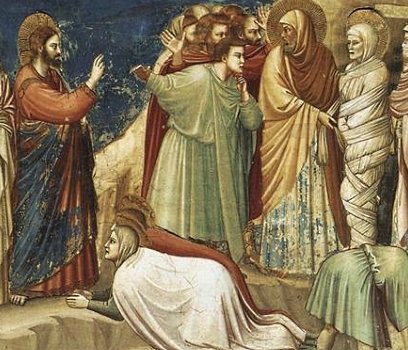 Readings:
Readings:
Ezekiel 37:12–14
Psalm 130:1–8
Romans 8:8–11
John 11:1–45
As we draw near to the end of Lent, today’s Gospel clearly has Jesus’ passion and death in view.
That’s why John gives us the detail about Lazarus’ sister, Mary—that she is the one who anointed the Lord for burial (see John 12:3, 7). His disciples warn against returning to Judea; Thomas even predicts they will “die with Him” if they go back.
When Lazarus is raised, John notices the tombstone being taken away, as well as Lazarus’ burial cloths and head covering —all details he later notices with Jesus’ empty tomb (see John 20:1, 6, 7).
Like the blind man in last week’s readings, Lazarus represents all humanity. He stands for “dead men”—for all those Jesus loves and wants to liberate from the bands of sin and death.
John even recalls the blind man in his account today (see John 11:37). Like the man’s birth in blindness, Lazarus’ death is used by Jesus to reveal “the glory of God” (see John 9:3). And again like last week, Jesus’ words and deeds give sight to those who believe (see John 11:40).
If we believe, we will see—that Jesus loves each of us as He loved Lazarus, that He calls us out of death and into new life.
By His Resurrection Jesus has fulfilled Ezekiel’s promise in today’s First Reading. He has opened the graves that we may rise, put His Spirit in us that we may live. This is the Spirit that Paul writes of in today’s Epistle. The same Spirit that raised Jesus from the dead will give life to we who were once dead in sin.
Faith is the key. If we believe as Martha does in today’s Gospel—that Jesus is the resurrection and the life—even if we die, we will live.
“I have promised and I will do it,” the Father assures us in the First Reading. We must trust in His word, as we sing in today’s Psalm—that with Him is forgiveness and salvation.













